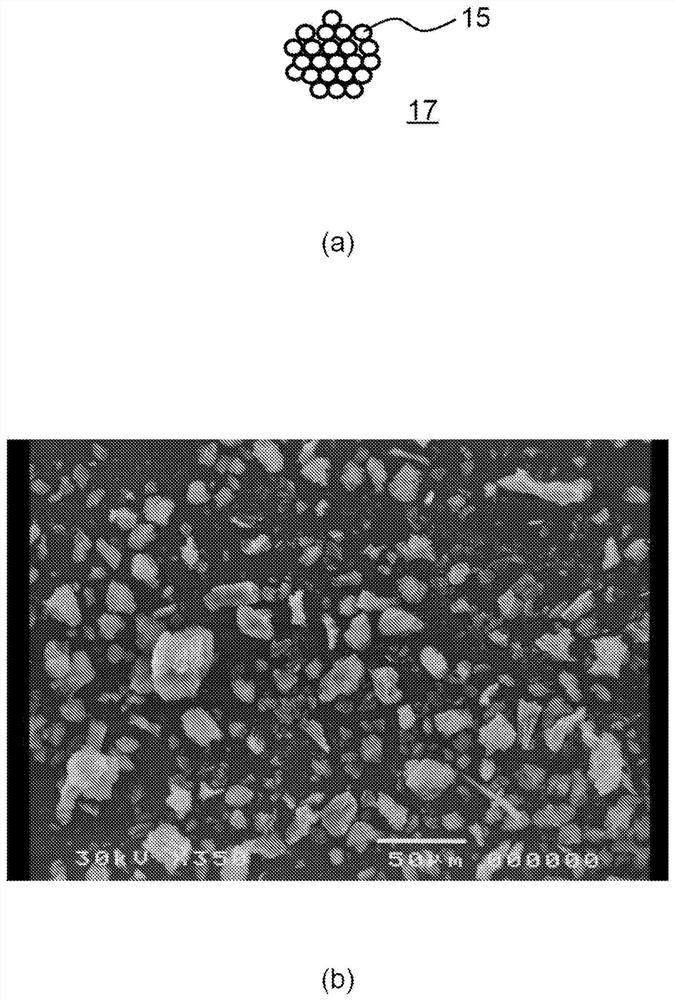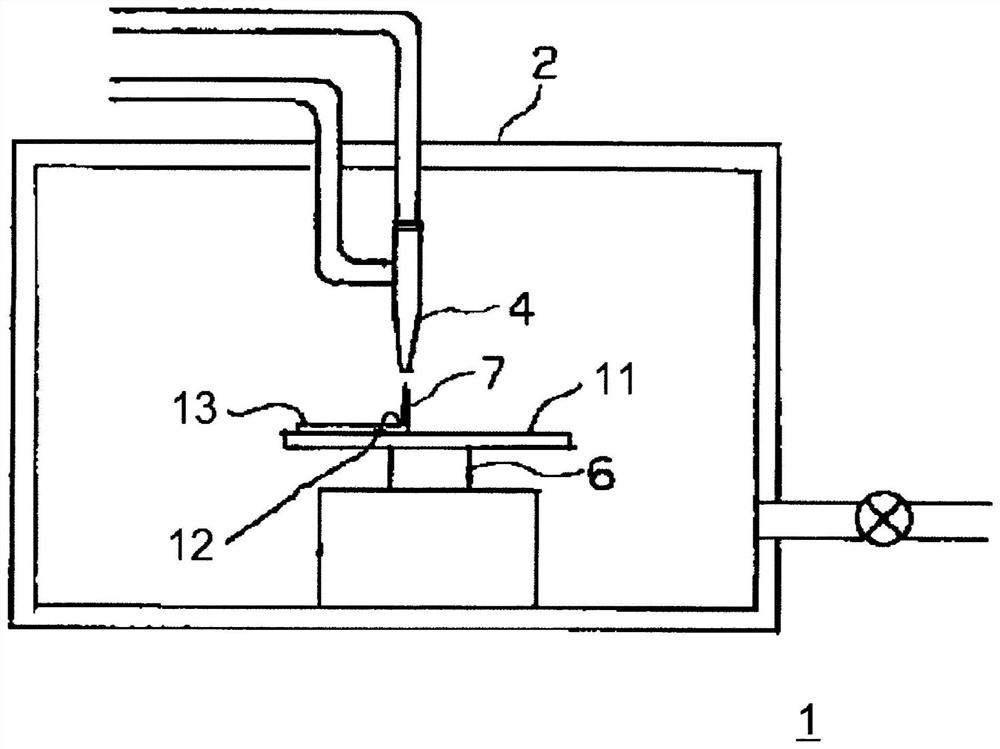Allophane-membrane composite, sheet using the same, and method for producing allophane-membrane composite
A kind of allophane, composite technology, applied in the direction of pressure inorganic powder coating, layered products, etc., can solve the problems of excess volume, field restrictions, etc., to achieve the effect of no reduction in adsorption capacity and fast adsorption speed
- Summary
- Abstract
- Description
- Claims
- Application Information
AI Technical Summary
Problems solved by technology
Method used
Image
Examples
Embodiment 1
[0067] As Example 1, allophane raw material particles 17 were sprayed onto a nonwoven fabric (a nonwoven fabric whose surface was coated with a polyethylene film) substrate, and an allophane film was formed by the AD method. The sized allophane powder was aerosolized with a nitrogen gas flow rate of 2.5 L / min, and passed through a nozzle with an opening width of 30 mm × 0.2 mm to a non-woven fabric (made of polyethylene) placed in a chamber of a vacuum atmosphere of 20 Pa. The film-coated nonwoven fabric) substrate was sprayed to form an allophane film, and a allophane film-nonwoven composite was produced. The substrate is reciprocally displaced relative to the nozzle at a speed of 4mm / s, the film forming time is 500 seconds, and the film forming area is 30×100mm 2 .
[0068] The weight of the allophane film-nonwoven fabric composite was measured, and the weight of the allophane film was calculated from the difference from the weight of the nonwoven fabric before film formati...
Embodiment 2
[0082] An allophane film-nonwoven fabric composite was produced in the same manner as in Example 1, except that the spraying time of the aerosol to the substrate was about 100 seconds.
[0083] The weight of the allophane film was calculated in the same manner as in Example 1, and it was 0.16 g. The thickness of the allophane film was measured in the same manner as in Example 1, and was about 38 μm. The surface hardness of the allophane film was evaluated in the same manner as in Example 1, and as a result, the allophane film had a surface hardness of H or higher. The adhesion of the allophane film was evaluated in the same manner as in Example 1. As a result, the allophane film did not peel off when it was bent once at 90°. The adhesion of the allophane film to the base material was evaluated with a cellophane tape in the same manner as in Example 1. As a result, it was found that the adhesion of the allophane film was 4.0 N / 10 mm or more. The hygroscopic properties of the ...
Embodiment 3
[0085] A film-forming material was produced in the same manner as in Example 1, except that the spraying time of the aerosol to the substrate was about 1250 seconds.
[0086] The weight of the allophane film was calculated in the same manner as in Example 1, and it was 0.21 g. The thickness of the allophane film was measured in the same manner as in Example 1, and it was about 50 μm. The surface hardness of the allophane film was evaluated in the same manner as in Example 1, and as a result, the allophane film had a surface hardness of H or higher. The adhesion of the allophane film was evaluated in the same manner as in Example 1. As a result, the allophane film did not peel off when it was bent once at 90°. The adhesion of the allophane film to the base material was evaluated with a cellophane tape in the same manner as in Example 1. As a result, it was found that the adhesion of the allophane film was 4.0 N / 10 mm or more. The hygroscopic properties of the allophane film-n...
PUM
| Property | Measurement | Unit |
|---|---|---|
| diameter | aaaaa | aaaaa |
| thickness | aaaaa | aaaaa |
| thickness | aaaaa | aaaaa |
Abstract
Description
Claims
Application Information
 Login to view more
Login to view more - R&D Engineer
- R&D Manager
- IP Professional
- Industry Leading Data Capabilities
- Powerful AI technology
- Patent DNA Extraction
Browse by: Latest US Patents, China's latest patents, Technical Efficacy Thesaurus, Application Domain, Technology Topic.
© 2024 PatSnap. All rights reserved.Legal|Privacy policy|Modern Slavery Act Transparency Statement|Sitemap



